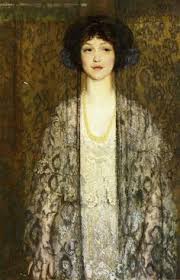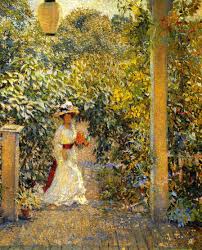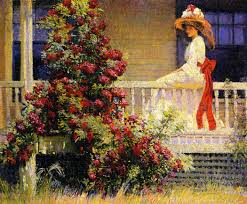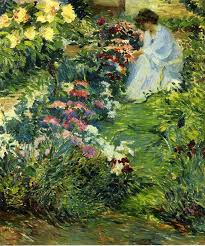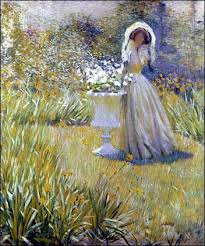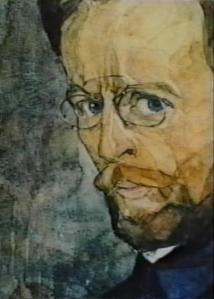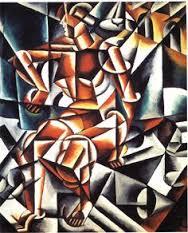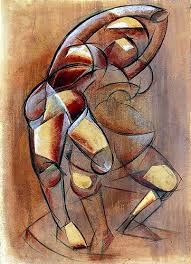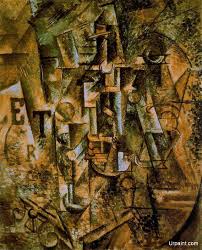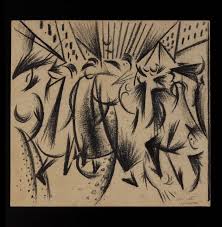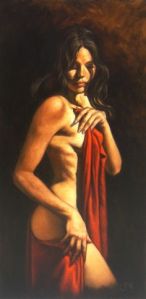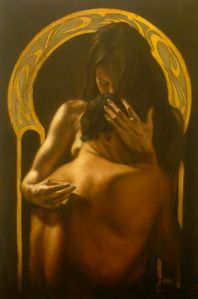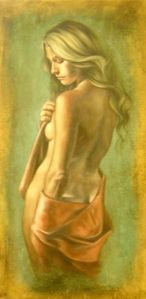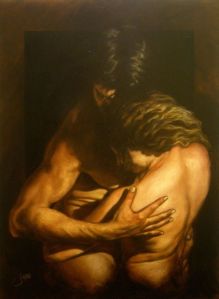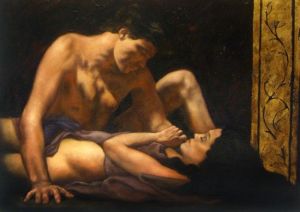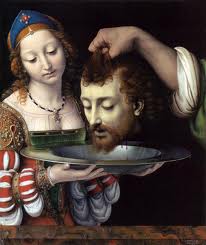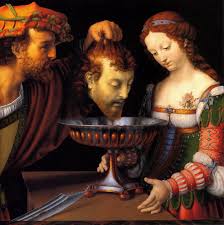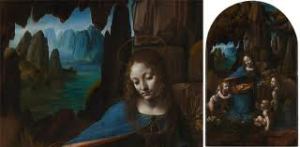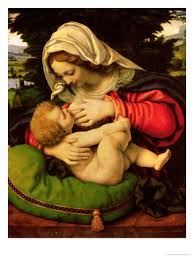Philip Leslie Hale, born 1865 in Boston, MA. She worked with mostly oil paints. I appreciate the brush strokes with each piece and how she was able to capture movement by color choice and placement. Each stroke has rhythm and a narrative. Lighting was placed in such a way to capture what light was present when the Hale painted her paintings. All colors compliment one another and I like the sense of some illusion when it comes to some of the paintings faces. The delicate ruffles on the dress with slight movement of air gives the painting a sense of weather temperament. The hues pop out of the painting and into a surreal life in my mind.
JME
Week Three: Cubism and Futurism; Alexander Bogomazov
Alexander Bogomazov born April 7, 1880 in Yampil – on June 3, 1930 was a painter that not only had work in cubism but in futurism as well. In his paintings you can see good use in space as he worked with the rule of the three’s. You can tell each object was chosen carefully and placed in such a way to keep your eye engaged in each painting. I see rhythm and movement. Colors where painted dark to light and there is dynamic contrast. Light colors with used for highlights and to show directional light. I enjoy his own version of his self portrait and how light colors were blended in such a way to look like realist skin color.
Week Two: American Neo-Classical Baroque painter: Julianna Pasadena
Julianna Pasadena is an American Neo-Classical Baroque painter. Her work has been directly inspired by Rubens, Caravaggio and Michelangelo. From the Classical, she draws upon the ability to see perfection and portray that idealized beauty in her figures. From the Baroque period, she is inspired by the emotion, drama and essence of light to be found in so many of the works. Integrating these two periods allows her to express her own personal point of view according to Pinterest. I appreciate her techniques and gentle strokes using oil and acrylic paints and varnish techniques going back 500 years. She used layers, blending and painting with color glazes. I like how she placed the highlights in just the right spots to bring out emotion and passion in her paintings.
Week One: Renaissance; Andrea Solario 1460-1524.
Andrea Solari, also known as Antonio “Solari,” was a renaissance painter who captured expressions such as sadness, despair, and vengeance by painting contrast between light and dark and gives illusion of depth. Expressions of the faces in his painting are a huge part on how he tries to capture emotion of a whirlpool of feelings towards curtain events such as Jesus death. The renaissance period had a huge impact on how image was perceived and Solari did a wonderful job of capturing the moment. The sadness and mourning of Jesus death was a huge eventual influential impact domino effect, in all religions (which were a majority of the population at the time).
The beheading of John the Baptist was also a huge event that impacted many lives in the renaissance period. The story is gruesome and was captured very well by using the value scale and capturing depth and dark colors to capture the mood. This head on the plate was one of the first that then became a trend to do reversions that came close but, never replaced the horrific impact of emotions such as an actual event that effected so many lives. They say that although this painting is supposed to be the head of John the Baptist, it is actually the face of Solari that was used.
Andrea Solari was a great painter of the renaissance period that contributed to the art work through expressional emotional art. Solari was not afraid to show emotion and felt that it was very human to expect and deal with emotions (one way being in art) to release deep pent down feelings. I appreciate the value and contrast used in these paintings along with the choice of oil paint.
